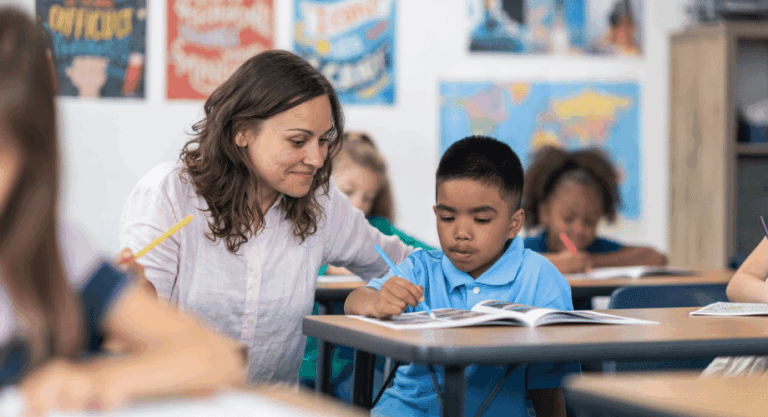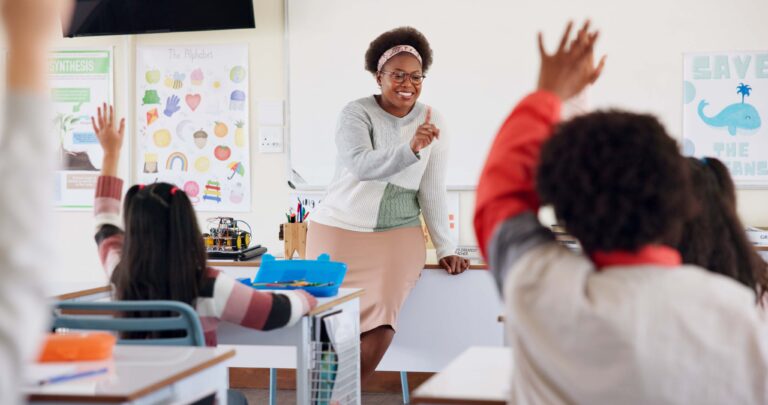English learner instruction: A time for reflection and moving forward

This semester marks 30 years for me as an educator. During my entire career, I have been involved in instruction that impacts the English learner, either as a bilingual/ESL teacher working with elementary school-aged students, as a bilingual specialist working with all grade levels, and even teaching adult learners. I am humbled and feel privileged that I can now work with and advise district and state departments of education throughout the country.
If I take the time to reflect on my 30 years, some questions seem to be asked repeatedly: “When it comes to instruction for our English learners, what’s the perfect program?” “What’s the magic formula or the silver bullet?” If anyone really knew, it would be packaged nicely and on sale, making big bucks. Back in 2006, I remember waiting anxiously for the report of the National Literacy Panel for Language Minority Children and Youth. I thought it would answer all questions about EL instruction and best practices. In a nutshell, it stated that good instruction for students, in general, tends to be good instruction for the English learner. However, it also said that adjustments had to be made to the instruction. The real dilemma was that these adjustments were never clearly identified. As a side note, the adjustments mentioned in that report—Developing Literacy in Second-Language Learners—by the National Literacy Panel for Language Minority Children and Youth pertained to the delivery of the five reading components identified by the National Reading Panel six years earlier: phonemic awareness, phonics, fluency, vocabulary, and text comprehension. It felt like the field was back to square one.
Since that 2006 publication, a lot has been learned. Although more research is needed to answer tough questions, such as delivering dual-language instruction and appropriate assessments to gauge growth or the need for additional support, we have identified what effective literacy instruction looks like. I argue that we must take what we have learned through years of research (see The Reading League’s Science of Reading: Defining Guide) and be strategic about the adjustments made to instruction to better serve our EL students).
As I continue adding to this blog, I anticipate addressing different elements of working with English learners and how to scaffold instruction. Let me start by mentioning how pleased I am that the field has become more aware of the considerable variability when working with ELs. So, this is the first bit of advice I have to offer, and as logical as it may sound, I think we often risk taking it for granted. English learners cannot be categorized or grouped under one simple umbrella. There is such variability when working with ELs that getting to know each student is critical.
The Migration Policy Institute reports that 85% of our ELs in PreK-Grade 5 are second, third, or even fourth-generation English learners. They were born in the U.S. and are U.S. citizens. In grades 6-12, that percentage drops to 62%. Most of these students have developed some level of oral language that can serve as the launching pad for early literacy skills. For our newcomers, however, the instruction will look different as we must begin building oral language from the simplest words to common phrases to help them maneuver through the day. Although the curricula are limited, some will support instruction to help the student move quickly beyond the silent or pre-production stage of language acquisition.
Other essential items to consider are the age of the students, the linguistic and language skills they possess, and always honoring their cultural and experiential backgrounds. Let me address each briefly. Older students might have more background information they can access but might be more hesitant to experiment with the language. In other words, we need to offer students opportunities to experiment orally and hypothesize, at times, about proper word order or even sentence structure. Through strategic partnering of ELs with speaking buddies, small group instruction, and continuous teacher monitoring, students can build their oral language repertoire. On the other hand, young English learners may not have extensive background knowledge but are more eager to play with the language. The bottom line is students must continue to develop their oracy skills.
As students develop their language skills and become capable communicators, we may be tricked into believing that their linguistic skills are evolving simultaneously. Unfortunately, that is not always the case. Let me define what I mean by linguistic skills. These skills involve knowing a language such as English, for example, deeply. What is unique about the targeted language’s phonology, orthography, morphology, and syntax (to name a few components)? I am so proud that my colleague and co-author, Mary Dahlgren, and I have addressed some of these differences in the phonetics program that we recently published, Kid Lips. Because almost 75% of our nation’s English learners are Spanish speaking, we have identified potential challenges between both languages. For example, the phoneme /b/ is found in the initial position in English words such as boat and bear, the middle position as in fiber, and the final position as in tub. However, in Spanish, the /b/ is never articulated in the final position, which can explain the misarticulation of that phoneme or errors in spelling. We find the same predicament with phonemes like /m/ and /k/. This is something to consider when working with all students, regardless of their native language.
As an English Learner myself who went through the system at a time when very little, if anything, was known about teaching kiddos who were non-native speakers of English, I am thankful to the dedicated and caring teachers who stepped up to the challenge. They knew how to lighten my cognitive workload. They were instrumental in making me fall in love with language and linguistics and setting the foundation that led to my ongoing pursuit of improving our field. Did I suffer some hardships because the system was still learning? Of course. Some of us did. However, I genuinely believe that, as educators, we all strive to improve the educational experience of all our students. And, as Maya Angelou so eloquently wrote, “Now that we know better, let’s keep on doing better.”
¡Abrazos! – Hugs



